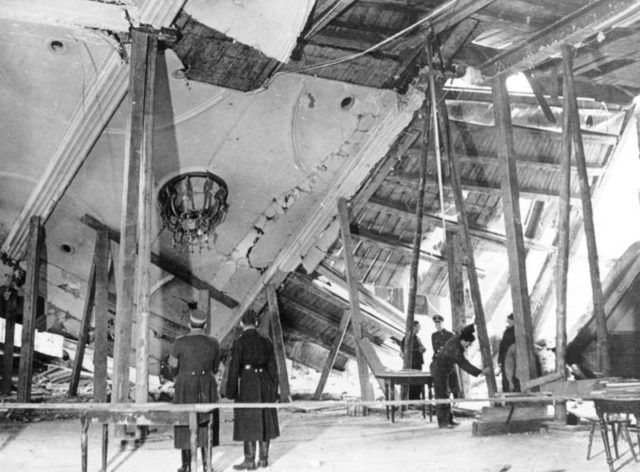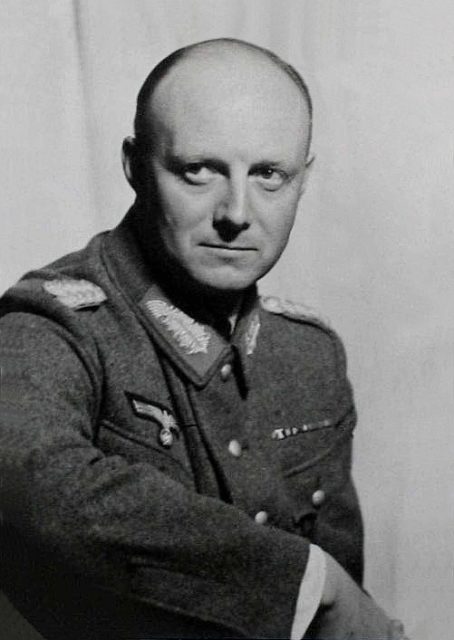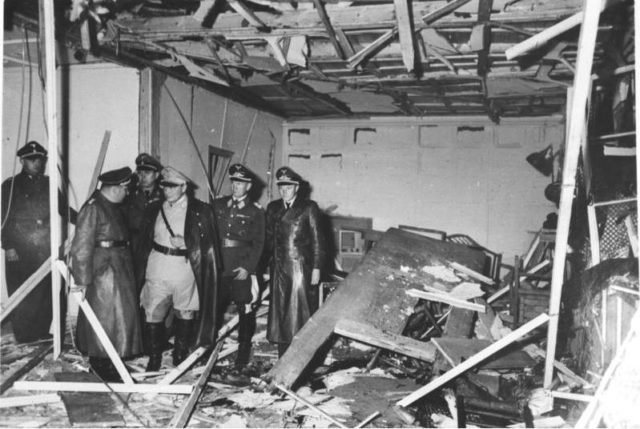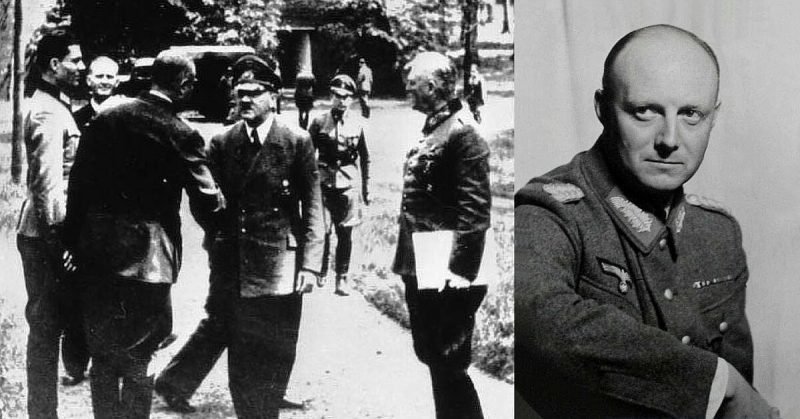In a recent post, we revisited all of the assassination attempts on Hitler before the war. Before the war, Hitler’s would-be assassins were his political opponents in Germany. These people considered the Nazis a menace to the country and wanted to change the political climate by killing their leader.
When Hitler invaded Poland on 1st of September, 1939, this menace became a threat to Europe, and, soon after, the entire world. Killing Hitler meant bringing peace. But the Allies weren’t very keen on organizing assassination, for Nazi Germany seemed impregnable. Most attempts on Hitler’s life were conducted by Germans who acted without foreign support.
So forget the Inglorious Basterds, it was men like Claus von Stauffenberg, Henning von Tresckow, and Günther von Kluge who were among the real plotters of Hitler’s demise.
After 1939, everyone wanted Hitler’s head on the plate, but he tightened his security measures to an insane extent. Out of fear of assassination Hitler surrounded himself with elite bodyguards from the Führerbegleitkommando (Führer Escort Command; FBK), while the Gestapo searched for conspirators and spies.
The Allies had several plans to end the war with one bullet, but none of them came to fruition. The most notable attempt was Operation Foxley planned by the SOE (Special Operations Executive). The plan was to infiltrate two special operatives: one British sniper and a Pole, who was fluent in German.
The plan was submitted in November 1944 but was never carried out because controversy remained over whether it was actually a good idea to kill Hitler. He was by then considered to be such a poor strategist that it was feared whoever replaced him would do a better job. The Allies also feared that such sneaky tactics would make Hitler a martyr to the German people. This would make it harder to eradicate Nazism afterward, for it would cause a myth that the war could’ve been won if Hitler hadn’t been assassinated.
One peculiar plan dating from early 1944, suggested by a group of US airmen, included a stack of pornography that was supposed to be dropped above Hitler’s mountain resort in Berchtesgarten. The airmen proposed that the pornography would make the puritan Hitler go mad with lust and commit suicide.
Well, they got the suicide part right, but his motives in 1945 were more straightforward… utter defeat, for example. The plan was, of course, dismissed as a joke, but it seems that the airmen were serious about their idea.
1939

The first assassination attempt on Hitler after the invasion of Poland happened on November 8th, after Georg Elser, a communist who served a sentence in Dachau was released. Elser counted on Hitler’s appearance on the anniversary of the Beer Hall Putsch. He managed to sneak into the hall in Munich where Hitler held his annual speech and hid an explosive device that had a time detonator.
He set the bomb to go off at 9:30, for it was the time when Hitler ended his speeches in the earlier years. But Elser didn’t keep in mind that these were wartime conditions, so the speech was cut short. When the bomb went off, Hitler was already at the train station, headed back to Berlin.
After this event, there were no more attempts on Hitler’s life by Communists and other German political minorities, for they were all by that time exterminated, imprisoned or exiled.
1940 / 1941

In 1940 and 1941 three more attempts were prepared but never put into action. The first was in Paris, and it involved Count Fritz Dietlof von der Schulenberg, a senior government official who planned to shoot Hitler during the 27th of July Victory Parade. The parade was canceled, and Von der Schulenberg continued to plot with other Wehrmacht officers.
In 1941, Captain Graf Schwerin von Schwanenfeld, Major Hans Alexander von Voss, and Captain Graf von Waldersee planned to attack Hitler during yet another parade in Paris, which was also canceled. The plan was that two of the high-ranking men would shoot Hitler as he watched the parade while the third would throw a grenade to seal the deal.
Then, in Belarus, Henning von Tresckow, a central figure of the German resistance movement, arranged for Hitler to visit him at the Army Group Centre Headquarters in Borisov. Hitler canceled several times but finally agreed to pay a visit to the Eastern Front. When he arrived, he was accompanied by a large number of bodyguards and even though the assassins had a clear target, they got cold feet and aborted the operation for there was no way to escape if they succeeded.
1943
Von Tresckow, together with Field Marshall Von Kluge tried to kill Hitler again in 1943. It was supposed to be a mid-air explosion, for they planted bombs in two bottles of cognac and placed them in Hitler’s airplane. The bottles were put in a unheated locker. The low temperature disrupted the mechanism and the bomb failed to explode.
Von Tresckow wouldn’t give up! His next plan involved a suicide bomber. Rudolf Von Gersdorff, an officer, volunteered for the job but failed to get near Hitler during a weapon inspection at the Army Group Centre in Berlin. When it became obvious that he couldn’t reach Hitler, Von Gersdorff went to the toilet and disarmed the bomb.
There were three more similar scenarios in late 1943 and early 1944 in various locations including Lithuania and Germany that were all ruined due to unpredicted complications, usually involving unpleasant coincidences.
1944

Then Von Tresckow met with Colonel Claus von Stauffenberg. Before the historic events of July 20th, codenamed among the plotters as Operation Valkyrie, there were two attempts to blow Hitler up on 6th and 11th of July 1944.
Colonel Stauffenberg was a valuable addition to Von Tresckow’s group for he had been the Chief of Staff to the Commander-in-Chief of the Replacement Army and had direct access to Hitler. On his first time, he simply judged that the attack should be canceled. Stauffenberg’s second attempt was aborted because Himmler didn’t attend the meeting on which the bomb was supposed to go off.
The conspirators were convinced that it was necessary to murder Himmler together with Hitler, for he could easily replace the Fuhrer and cause a civil war between the Wehrmacht and the SS, or simply continue the fight against the Allies.
On 20th of July, 1944, everything was set to plant an explosive device in the heart of the Nazi war machine ― the Wolf’s Lair. Operation Valkyrie was in effect. The bomb went off in the meeting hall, set by Stauffenberg, who attended the meeting, but managed to exit just before the explosion. Due to complications concerning the change of schedule, Stauffenberg had enough time only to arm one of the two bombs intended to go off in the room. Nevertheless, when he heard the explosion, he drove to the airfield and arrived in Berlin where he and his fellow conspirators initiated a coup, claiming that Hitler was dead. When they were proven wrong, the resistance fell apart. Stauffenberg was captured and shot. Von Tresckow committed suicide and so did many others involved with numerous plots against Hitler.
The last attempt on Hitler’s life was conducted by his trusted associate Albert Speer, who tried to poison the air ventilation system of the Fuhrerbunker in Berlin in February 1945. This was a desperate attempt to end the war a bit earlier, but it failed since had Hitler doubled the security in his last days.
After numerous unsuccessful assassination attempts, Adolf Hitler committed suicide on 30th of April 1945, thus finally ending WWII in Europe.
